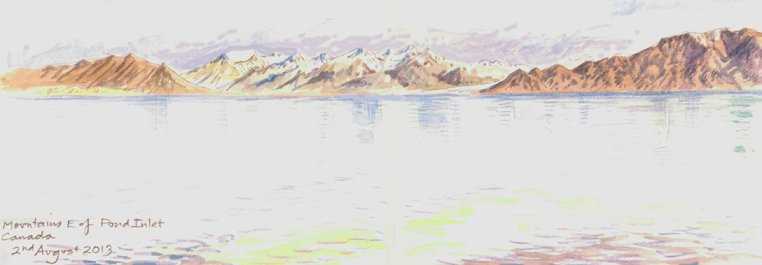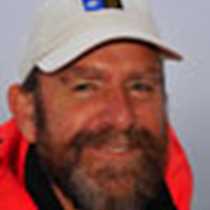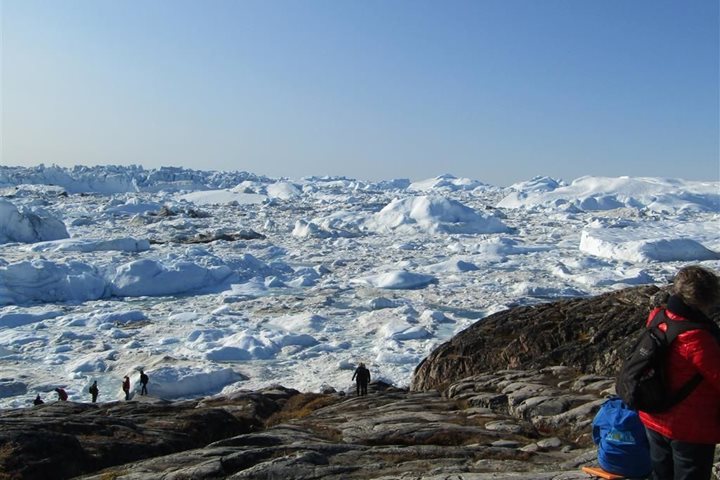Yesterday we set off from above Disko Island on the west coast of Greenland, course west-northwest for Canada. There was an impressive sea running as we left the rugged cockscomb mountain of Uummannaq Island behind us and punched out into Baffin Bay. In times past, these were notorious waters, braved by the whalers and sealers who had come to plunder the rich bounty of the Arctic seas. Those who tarried too long got caught by the early onset of winter and found themselves caught fast in the grip of an ocean that had frozen overnight. Such tales of hardship, starvation and dogged human survival make for gripping reading today. We are lucky to be here in summer with all the safeguards of internet weather forecasts and ice charts to warn us of impending peril.
By early morning we were into calmer, richer waters: kittiwakes and fulmars crisscrossed our path, sleek long-tailed jaegers swept past on athletic wings. There were thick-billed murres feeding on the water and small gangs of dovekies whirring low over the waves like bumblebees. Rich waters indeed. This mix of warm southern and frigid Labrador currents feeds everyone from copepod to leviathan.
But besides the whalers, there were men with eyes on a greater prize: the Northwest Passage, gateway to Cathay and all the fabled riches of the East. One of the first to come here was Martin Frobisher, ex-pirate, darling of the virgin queen, Elizabeth the First, and self-styled adventurer. In 1567, he reached the southern tip of Baffin Island (at the eponymous Frobisher Bay) where he had a skirmish with Inuit (who captured five of his men) but returned with black rocks that promised gold. In two subsequent voyages his dream of a gold rush expired without profit.
Fifty years later, the great Henry Hudson arrives on behalf of the British East India Company, charts a route through to Hudson Bay and lays the foundation for a company which will endure for another three centuries. In 1616 comes another quest for the NW Passage, led by William Baffin. He followed our own route round the southern tip of Greenland, up to the bay he named after Lord Melville, first Lord of the Admiralty, and then down the east side of the island to which we are headed; his name is immortal now, for we are crossing Baffin Bay en route to Baffin Island.
By evening the still, glassy waters glow with pink streaks and we can see our destination: Canada and the snow-clad peaks of Baffin itself. A new adventure starts!







